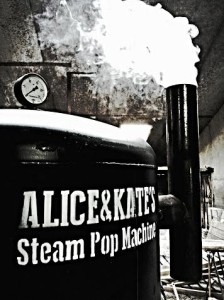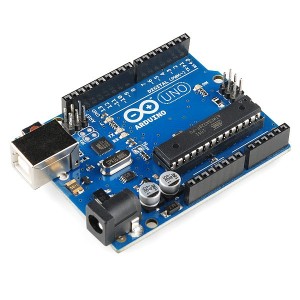The Raspberry Pi lacks a decent power ON/OFF button. With a handful of cheap components a ATX style power-switch can be build.
Schematics
Main parts are a PIC microcontroller, a 5V relay, a push button and a LED.
The Raspberry Pi lacks a decent power ON/OFF button. With a handful of cheap components a ATX style power-switch can be build.
Main parts are a PIC microcontroller, a 5V relay, a push button and a LED.
 What would be your reaction when a friend tells you she’s going to build a popcorn machine dressed up as a steam-engine? Selling (organic) popcorn in a very entertaining and interactive way on large festivals, by acting, role playing and having big fun while earning some money. I thought it would be a great idea. A great idea that needed something special to come alive. Noises, background noises, random noises and interactive noises.
What would be your reaction when a friend tells you she’s going to build a popcorn machine dressed up as a steam-engine? Selling (organic) popcorn in a very entertaining and interactive way on large festivals, by acting, role playing and having big fun while earning some money. I thought it would be a great idea. A great idea that needed something special to come alive. Noises, background noises, random noises and interactive noises.
Alice & Kate, not there real names by the way, came up with this brilliant plan and build themselves a beautiful Steam Pop Machine all in Steampunk style. Checkout there website www.steampopmachine.com if you like to see more of this build, it’s in Dutch but the images will tell you what it’s all about.
They asked me “We like to add special noises to the machine, is that possible?”. Sure, no problem. So I hooked up an Arduino board with a MP3 shield and started programming.
Read on …
 From time to time I get questions if I have plans to rewrite the CD-Pro controller software in a more accessible language. I agree that Assembler code isn’t the easiest way to go. But, “No I do not have plans to rewrite the complete software to C(++) or whatever language”. But as a small project I converted the DSA protocol part into an Arduino library. This to make it easy to control a CD-Pro2, CD-Pro2M, CD-Pro2LF, GyrFalcon 8 or whatever unit that speaks the DSA protocol.
From time to time I get questions if I have plans to rewrite the CD-Pro controller software in a more accessible language. I agree that Assembler code isn’t the easiest way to go. But, “No I do not have plans to rewrite the complete software to C(++) or whatever language”. But as a small project I converted the DSA protocol part into an Arduino library. This to make it easy to control a CD-Pro2, CD-Pro2M, CD-Pro2LF, GyrFalcon 8 or whatever unit that speaks the DSA protocol.
Since the Arduino platform is one of the simplest to work with, even for newbies in micro-controller world. Making this library might help some people to get started with programming there own CD player. By including a display, keyboard and RC5 receiver you can build your own CD player (code).
The library can be found on Github and includes two simple examples. One to control a CD-Pro unit and one the use the library to communicate between two Arduino boards.